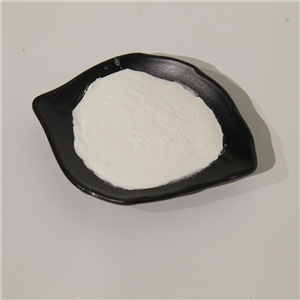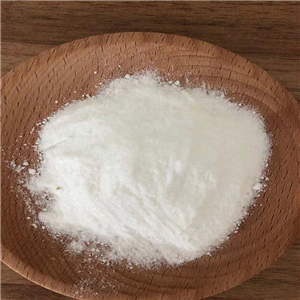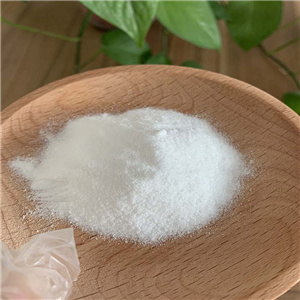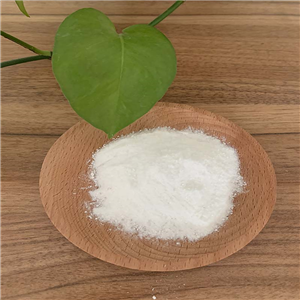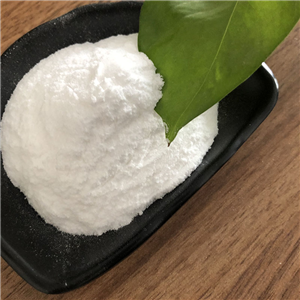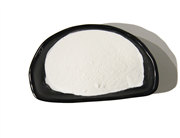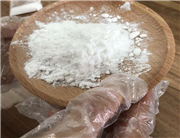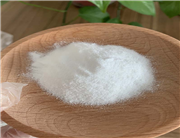1/5
Rapamycin
- Min. Order1KG
- Purity0.99
- Cas No53123-88-9
- Supply Ability20T
- Update time2023-03-27
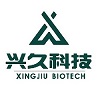
| Product Name | Rapamycin |
| CAS No | 53123-88-9 |
| EC-No | |
| Min. Order | 1KG |
| Purity | 0.99 |
| Supply Ability | 20T |
| Release date | 2023/03/27 |
| Indications and Usage | Rapamycin (Rapa, or Sirolimus) is a new form of macrolide immunosuppressive agent. It is a white solid crystal. Its melting point is 183-185℃ and it is lipophilic. It is soluble in methanol, ethanol, acetone, chloroform, and other organic solvents, very slightly soluble in water, and almost insoluble in ether. It was first discovered in 1975 on the Chilean Easter Island as a secondary metabolite secreted by soil Streptomyces, and its chemical structure is that of a three-polyene macrolide compound. Rapamycin is a new form of immunosuppressive agent with good curative effects, low toxicity, and no nephrotoxicity. It can be used to maintain the immunity of transplant organs (especially in kidney transplants) to alleviate immunological rejections after organ transplant surgeries. The latest research has shown that Rapamycin can also be used to treat Alzheimer’s. When used on afflicted lab rats, it had a memory-restoring effect. Rapamycin oral tablets can be taken with grapefruit juice to treat melanoma (a type of benign tumor common among Western populations), dramatically increase other chemotherapy drugs’ anticancer effects, and extend patient survival. Rapamycin is a mammalian target of rapamycin (mTOR) targeting inhibitor, which can treat tumors that are related to this pathway including kidney cancer, lymphoma, lung cancer, liver cancer, breast cancer, neuroendocrine carcinoma, gastric cancer, etc. Its curative effects are especially strong for the rare diseases LAM (lymphangiomyomatosis) and TSC (tuberous sclerosis). |
| Mechanisms of Action | Rapamycin is a type of macrolide antibiotic and has a similar structure to Prograf (FK506), but has very different immunosuppressing mechanisms. FK506 suppresses T lymph cells from proliferating from G0 to G1 stage, while RAPA uses different cytokine receptors to block signal transduction, thus preventing T lymph cells and other cells from proliferating from G1 to S stage. Compared to Prograf, Rapamycin can block the signal transduction pathways of the calcium dependency and calcium non-dependency of T lymph cells and B lymph cells. |
| Application | As an mTOR inhibitor, sirolimus has a broad spectrum of activity that has demonstrated the ability to inhibit inflammation, proliferation, angiogenesis, fibrosis, and hyperpermeability. Sirolimus currently has multiple uses in the prevention of rejection in organ transplantation and, recently, in the treatment of advanced renal cell carcinoma. Sirolimus-eluting cardiac stents have been shown to limit the rate of overgrowth of tissue and thus prevent coronary restenosis. Early studies suggest that it may be an effective agent for controlling severe uveitis and that it may also have a role in treating agerelated macular degeneration. |
| Adverse reactions | Rapamycin has similar side effects to those of Prograf. Many clinical trials have found that its side effects are dose dependent and reversible. A treatment dosage of Rapamycin has not been found to lead to any significant nephrotoxicity or gingival hyperplasia. Its main toxic side effects include: headache, nausea, dizziness, nosebleed, and join pain. Laboratory inspections for anomalies found: thrombocytopenia, decreased white blood cells, decreased hemoglobin, hypertriglyceridemia, hypercholesterolemia, hyperglycemia, increased liver enzymes (SGOT, SGPT), increased lactate dehydrogenase, hypokalemia, hypokalemia, etc. Rapamycin may lead to puffiness of eyelids and lead to lowered plasma phosphate levels. Similar to other immunosuppressants, Rapamycin may also increase the chance of infection, with reports of increased tendency towards pneumonia. |
| Chemical Properties | White to Off-White Solid |
| Originator | Rapamune,Wyeth Laboratories,UK |
| Uses | Tool for immunochemistry. |
| Uses | A specific mTOR inhibitor with an IC50 of 0.1 nM. |
| Uses | antidepressant |
| Uses | immunosuppressant, antineoplastic; rapamycin |
| Uses | Rapamycin is a triene macrolide discovered in 1995 as a metabolite of Streptomyces hygroscopicus found in a soil obtained on Rapi Nui (Easter Island). Rapamycin displayed potent and selective antifungal activity, notably against Candida albicans. Interest in the metabolite waned until the structural relationship to the potent immunosuppressant fujimycin (Antibiotic FK506) was recognised in the mid-1980s. This recognition led to the re-discovery of rapamycin as a highly selective antitumour and immunosuppressant. Rapamycin inhibits the activity of the protein, mTOR (mammalian target of rapamycin) which functions in a signalling pathway to promote tumour growth. Rapamycin binds to a receptor protein (FKBP12). The rapamycin/FKB12 complex then binds to mTOR and prevents interaction of mTOR with target proteins in this signalling pathway. |
| Uses | DDP-4 inhibitor type 2 diabetes therapeutic |
| Uses | Rapamycin is a triene macrolide discovered in 1974 as a metabolite of Streptomyces hygroscopicus found in a soil obtained on Rapa Nui (Easter Island). Rapamycin displayed potent and selective antifungal activity, notably against Candida albicans. Interest in the metabolite waned until the structural relationship to the potent immunosuppressant fujimycin (Antibiotic FK506) was recognised in the mid-1980s. This recognition led to the re-discovery of rapamycin as a highly selective antitumor and immunosuppressant. Rapamycin inhibits the activity of the protein, mTOR (mammalian target of rapamycin) which functions in a signalling pathway to promote tumor growth. Rapamycin binds to a receptor protein (FKBP12). The rapamycin/FKB12 complex then binds to mTOR and prevents interaction of mTOR with target proteins in this signalling pathway. |
| Uses | Labelled Rapamycin. A triene macrolide antibiotic isolated from Streptomyces hygroscopicus. Name derived from the native word for Easter Island, Rapa?Nui. Used as an immunosuppressant; antirestenotic. This compound contains aproximately 2% d0.;Labeled Sir |
| Indications | Mechanistic target of rapamycin (mTOR) is a serine/threonine-specific protein kinase in the PI3/PI4-kinase family. mTOR was named after the natural macrolide rapamycin, also known as sirolimus, which was isolated from a soil sample from Easter Island in the 1970s and later evaluated as an immunosuppressive agent. The anticancer activity of rapamycin was discovered in the 1980s, although the mechanismof action and the identification of the rapamycin target, mTOR, were not elucidated until the 1990s. Rapamycin and its macrocyclic analogues, such as temsirolimus (Torisel(R), Wyeth/Pfizer) and everolimus (Afinitor(R), Novartis), are grouped as “rapalogs” that constitute the first-generation mTOR inhibitors. Rapamycin was approved by the US FDA in 1999 as an immunosuppressive agent to prevent organ rejection in patients receiving kidney transplants. Although a large number of clinical studies have been performed to evaluate the anticancer activities of sirolimus in different types of cancers, such as invasive bladder cancer, breast cancer, and leukemia, most studies show limited efficacy. Outside oncological indications, sirolimus was approved by FDA for the treatment of a rare progressive lung disease lymphangioleiomyomatosis in 2015. Temsirolimus was approved for the treatment of advanced RCC. Everolimus was approved in the EU for the prevention of organ rejection in heart and kidney transplant recipients before FDA approved it in 2009 for the treatment of advanced RCC resistant to sunitinib or sorafenib and for the treatment of advanced or metastatic gastrointestinal and lung tumors in 2016. Additionally, rapamycin and rapalogs are being investigated as antiaging therapeutics or for the treatment of age-related diseases. Studies have revealed that mTOR activity can be retained under hypoxic conditions via mutations in the PI3K pathway, leading to increased translation and hypoxic gene expression and tumor progression. |
| Indications | Sirolimus (Rapamune) is structurally related to tacrolimus. It is approved for use as an adjunctive agent in combination with cyclosporine for prevention of acute renal allograft rejection. It blocks IL-2-dependent T-cell proliferation by inhibiting a cytoplasmic serine– threonine kinase. This mechanism of action is different from those of tacrolimus and cyclosporine. This allows sirolimus to augment the immunosuppressive effects of these drugs. |
Packaging & Shipping


Payment Terms

Company Profile

 Hebei Xingjiu New Material Technology Co., Ltd. was founded in 2018 and located in Xingtai City, Hebei Province.Our company products industrial intermediates, cosmetics raw materials, solvents and other daily chemical raw materials, to provide customers with a wide range of technology based differentiated products and right solutions.
Hebei Xingjiu New Material Technology Co., Ltd. was founded in 2018 and located in Xingtai City, Hebei Province.Our company products industrial intermediates, cosmetics raw materials, solvents and other daily chemical raw materials, to provide customers with a wide range of technology based differentiated products and right solutions.
After Sales Service
1.Professional Supplier
Xingjiu is a professional supplier of industrial intermediates,cosmetics raw materails,solvents and other daily chemical raw materials.
2.Own factory
Xingjiu has its own factory,which covers an area of more than 100 acres and 3 production workshops.
3.Strength
simultaneously,our factory also has a research and development and quality testing center,which with strong technical research and development strength.
4.Effective communication
More effective communication so that our products for you to reduce costs, improve efficiency, our company open all channels of communication to listen to your voice.
5. Great after-sales service
Any needs or questions contact me freely.
FAQ
Q1: Can I get a sample?
A:Free samples is available, while the shipping cost should undertake by your side.
Q2: What is your MOQ?
A:Our MOQ is1kg for your evaluation quality of our goods on the condition that sample charge is 100% paid.
Q3: How to delivery?
A:Goods will be shipped within 24 hours (Chinese holiday excluded), usually shipping by DHL, Fedex, EMS, TNT, HKETK. we will ship with another special safe and hidden packages to ensure you getting goods if there are some troubles with shipping address.
Q4:How to make orders?
A: Inquiry + payment+shipping.Firstly, please send inquiry to us. Secondly, pay your bill via Western Union, Money Gram, T/T or Bitcoin after our confirmation of orders. Finally, we ship products out and give tracking number to you.
Q5: Is there any discount?
A:of course. The price is negotiable. You will get discount and the most favorable price if you order large quantity goods or order with some other products together.
Company Profile Introduction
Xingtai Xingjiu New Material Technology Co., Ltd. was founded in 2018 and it is located in Xingtai City, Hebei Province.Our company aims to be a leading materials science company with innovation, customer orientation, inclusiveness and sustainability, committed to the sustainable development of society through our expertise in materials science and deep collaboration with our customers. Xingjiu company produces industrial intermediates, cosmetics raw materials, solvents and other daily chemical raw materials, to provide customers with a wide range of technology based on differentiated products and right solutions.Our goal is to be a leading position on chemical industry.With vigorous and progressive spirit and strong competitive strength, our company will strive to provide customers with high quality industrial products and excellent service, in order to achieve the lofty goal. Xingjiu company adheres to four core values of customer first, team building, innovation and responsibility.If you are interested in our products, please contact us by emails or calls.We will get back to you in time. Look forward to our cooperation.
